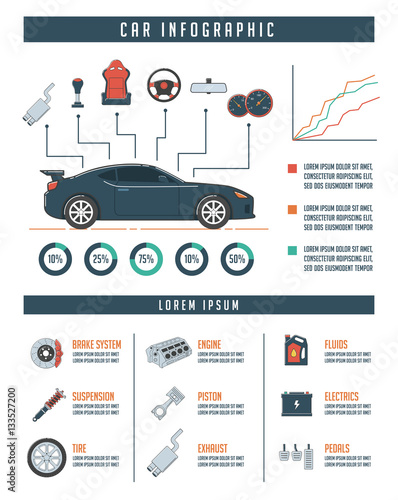Deciphering Your Vehicle'S Caution Indicators: What They Truly Indicate
Deciphering Your Vehicle'S Caution Indicators: What They Truly Indicate
Blog Article
Web Content Create By-Lauritsen Stark
When you're behind the wheel, those beautiful warning lights on your control panel can be a little bit perplexing. Do you know what they're attempting to tell you concerning your cars and truck's health and wellness? Understanding the value of these lights is essential for your safety and security and the longevity of your vehicle. So, the following time one of those lights turns up, would not you wish to analyze its message accurately and take the essential actions to address it?
Common Caution Lighting and Interpretations
Determine common warning lights in your car and recognize their significances to make certain safe driving.
The most typical warning lights consist of the check engine light, which indicates problems with the engine or emissions system. If this light comes on, it's essential to have your lorry examined promptly.
The oil pressure alerting light suggests low oil pressure, calling for immediate focus to stop engine damages.
A flashing battery light may suggest a defective billing system, possibly leaving you stranded otherwise resolved.
The tire pressure surveillance system (TPMS) light notifies you to low tire stress, impacting automobile security and gas effectiveness. Neglecting this might result in unsafe driving conditions.
The ABS light indicates a problem with the anti-lock braking system, jeopardizing your capability to quit promptly in emergency situations.
Last but not least, the coolant temperature level cautioning light warns of engine overheating, which can cause severe damages otherwise settled quickly.
Understanding these typical caution lights will certainly aid you resolve issues without delay and preserve secure driving problems.
Importance of Prompt Interest
Comprehending the typical caution lights in your auto is only the first step; the significance of quickly dealing with these warnings can't be highlighted enough to ensure your safety and security on the road.
When interior detailer brightens on your dashboard, it's your car's method of connecting a prospective concern that needs attention. Ignoring these warnings can bring about extra extreme troubles down the road, jeopardizing your safety and security and possibly costing you more in repairs.
Prompt interest to cautioning lights can protect against failures and accidents. For instance, a blinking check engine light can suggest a misfire that, if left unattended, might trigger damages to the catalytic converter. Resolving this quickly can save you from a pricey repair work.
Similarly, a brake system cautioning light could signal low brake fluid or used brake pads, crucial components for your safety and security when driving.
Do It Yourself Troubleshooting Tips
If you observe a caution light on your control panel, there are a few do it yourself repairing tips you can try prior to looking for professional help.
The primary step is to consult your vehicle's guidebook to recognize what the details warning light shows. In some cases the concern can be as easy as a loose gas cap causing the check engine light. Tightening https://oilchangeservices38383.frewwebs.com/32690703/discover-how-environment-friendly-car-detailing-items-can-elevate-your-car-s-luster-while-shielding-the-world-uncover-the-sustainable-options-waiting-on-you might deal with the issue.
An additional common concern is a low battery, which can trigger numerous warning lights. Inspecting recommended you read for rust and ensuring they're protected could fix the issue.
If a warning light continues, you can attempt resetting it by disconnecting the car's battery for a few mins and after that reconnecting it. In addition, checking your car's fluid degrees, such as oil, coolant, and brake fluid, can help fix alerting lights associated with these systems.
Verdict
To conclude, understanding your car's caution lights is important for maintaining your car running smoothly and securely. By without delay resolving these notifies and understanding what they indicate, you can prevent pricey fixings and prospective break downs.
Remember to consult your auto's handbook for specific information on each alerting light and do something about it appropriately to make sure a trouble-free driving experience.
Stay educated, stay safe on the road!
